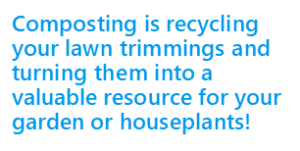Leave Your Leaves on Land
Fall leaves provide beautiful color on trees, but in local waters they contribute to algal blooms. Leaves are a leading contributor of phosphorus in our waters.
Properly cleaning up your yard in the fall will help keep our local waters clean too! Read these tips. Post this sheet in your garage near your rakes. Working  together to keep leaves out of the storm drain and out of local waters will help keep green on the land and out of the water.
together to keep leaves out of the storm drain and out of local waters will help keep green on the land and out of the water.
Keep Your Leaves on Your Property
A great way to make sure leaves do not end up in local waters is to keep them on your property! Mulch leaves in place by making several passes over the leaves with a mulching mower. This will keep leaves on your lawn and provide it with nutrients it needs for healthy grass next spring. Collect mulched leaves and spread them in garden beds or under shrubs. Leaves provide valuable protection for plants through the winter and also provide nutrients for spring growth.
Composting
Composting is recycling your lawn trimmings and turning them into a rich soil, know as compost – a valuable resource for your garden or houseplants. Cold composting requires little maintenance but can take up to 2 years to complete. To create a cold compost pile, mix non-woody yard wastes and let them sit.
Hot composting requires regular maintenance such as turning and watering, but can create compost in typically 1-3 months time. To create a hot compost pile, mix equal amounts of high nitrogen “greens” (wet and soft materials such as grass clippings) and high-carbon “browns” (dry and woody materials such as dead leaves) with 10% bulky materials such as wood chips. The mix should remain moist but not wet and should be turned often.
More information on Composting can be found on the internet.
Raking and Collection
If you decide to collect your leaves for removal from your yard, follow your community leaf collection policies and schedules. Put a tarp over leaf piles between pick-up times to prevent them from blowing away. Remove leaves and debris from the gutters and storm sewer inlets.
Stormwater is rain or snowmelt and water from things people do, like overwatering the lawn or discharging pool water into the street drain. We can choose products carefully and shape our lawns and pavement so water sinks in. When we do, runoff is reduced, pollutants filter out and streams and groundwater are protected.
Untreated runoff is the biggest threat to our nation’s water quality, according to the U.S. Environmental Protection Agency. Let’s make the small, important changes that will reduce that threat and improve water quality and our lives!
